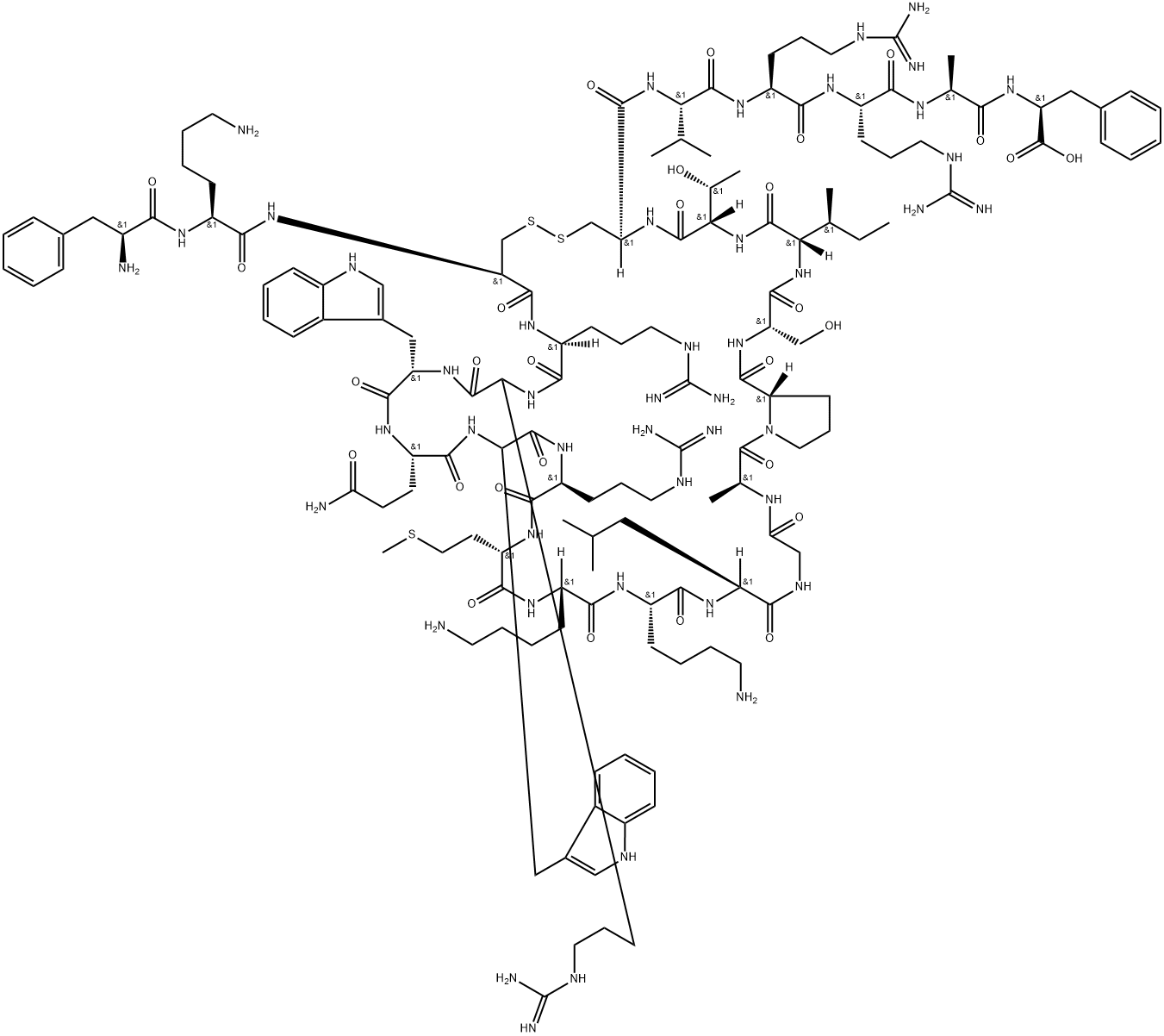Lactoferrin
Synonym(s):Growth-inhibiting protein 12;Lactotransferrin;Talalactoferrin
- CAS NO.:146897-68-9
- Empirical Formula: C141H224N46O29S3
- Molecular Weight: 3123.82
- MDL number: MFCD00164307
- Update Date: 2024-09-24 16:40:18

What is Lactoferrin?
Description
Lactoferrin, a granule-associated glycoprotein, is a cationic protein with a high proportion of arginine and lysine at the N-terminal region, with two glycosylation and several iron-binding sites. Lactoferrin is highly antibacterial against both gram-positive and gram-negative bacteria at concentrations ranging from 3 to 50 μg/ml. It is believed that these lethal effects are due to a direct interaction of lactoferrin with the cell surface and subsequent disruption of normal permeability functions of the membrane, a so-called dissipation of proton motive force action (23). Similarly, expression of an antimicrobial tachyplesin gene from Asian horseshoe crabs led to antibacterial activity against Erwinia spp. in transgenic potato (24).
The Uses of Lactoferrin
Lactoferrin was used in the fractionation of lactoperoxidase and lactoferrin from bovine whey using a cation exchange membrane. It was used in the determination of lactoferrin and immunoglobulin G in animal milks by new immunosensors.
The Uses of Lactoferrin
Lactoferrin was used to grow Streptococcus mutans in an iron-limiting medium. It was used to test if lactoferrin impedes epithelial cell adhesion in vitro.
What are the applications of Application
Lactoferrin is an antimicrobial and antifungal peptide
Biological Activity
Lactoferrin is an iron binding protein. It is structurally similar to transferrin, the plasma iron transport protein; but lactoferrin has a much higher affinity for iron (250 fold). It is very abundant in colostrum and small amounts can also be found in tears, saliva, mucous secretions and in the secondary granules of neutrophils. It is made by mucosal epithelium and neutrophils and is released by these cells in response to inflammatory stimuli. Bacterial growth is inhibited by its ability to sequester iron and also permeabilize bacterial cell walls by binding to lipopolysaccharides through its N-terminus. Lactoferrin can inhibit viral infection by binding tightly to the viral envelope protein. This prevents cell-virus fusion by blocking the binding domain. Lactoferrin appears to activate host defense systems in part by stimulating the release of interleukin-8, a neutrophil activator. It may also be involved in antibody and interleukin synthesis, lymphocyte proliferation and complement activation.
Biochem/physiol Actions
Lactoferrin is an iron binding protein. It is structurally similar to transferrin, the plasma iron transport protein; but lactoferrin has a much higher affinity for iron (250 fold). It is very abundant in colostrum and small amounts can also be found in tears, saliva, mucous secretions and in the secondary granules of neutrophils. It is made by mucosal epithelium and neutrophils and is released by these cells in response to inflammatory stimuli. Bacterial growth is inhibited by its ability to sequester iron and also permeabilize bacterial cell walls by binding to lipopolysaccharides through its N-terminus. Lactoferrin can inhibit viral infection by binding tightly to the viral envelope protein. This prevents cell-virus fusion by blocking the binding domain. Lactoferrin appears to activate host defense systems in part by stimulating the release of interleukin-8, a neutrophil activator. It may also be involved in antibody and interleukin synthesis, lymphocyte proliferation and complement activation.
Properties of Lactoferrin
| Density | 1.48±0.1 g/cm3(Predicted) |
| storage temp. | 2-8°C |
| solubility | H2O: 1 mg/mL |
| form | powder |
| color | pink |
| PH | pH (20g/l, 25℃) : 5.2~7.2 |
Safety information for Lactoferrin
Computed Descriptors for Lactoferrin
New Products
Tert-butyl bis(2-chloroethyl)carbamate 4-Methylphenylacetic acid N-Boc-D-alaninol N-BOC-D/L-ALANINOL N-octanoyl benzotriazole 3-Morpholino-1-(4-nitrophenyl)-5,6-dihydropyridin- 2(1H)-one Furan-2,5-Dicarboxylic Acid DIETHYL AMINOMALONATE HYDROCHLORIDE 1,1’-CARBONYLDIIMIDAZOLE R-2-BENZYLOXY PROPIONIC ACID 1,1’-CARBONYLDI (1,2-4 TRIAZOLE) N-METHYL INDAZOLE-3-CARBOXYLIC ACID (2-Hydroxyphenyl)acetonitrile 4-Bromopyrazole 5-BROMO-2CYANO PYRIDINE 5,6-Dimethoxyindanone 5-broMo-2-chloro-N-cyclopentylpyriMidin-4-aMine 2-(Cyanocyclohexyl)acetic acid 4-methoxy-3,5-dinitropyridine 1-(4-(aminomethyl)benzyl)urea hydrochloride 2-aminopropyl benzoate hydrochloride diethyl 2-(2-((tertbutoxycarbonyl)amino) ethyl)malonate tert-butyl 4- (ureidomethyl)benzylcarbamate Ethyl-2-chloro((4-methoxyphenyl)hydrazono)acetateRelated products of tetrahydrofuran








You may like
-
 Lactoferrin human CASView Details
Lactoferrin human CASView Details -
 Lactoferrin (from bovine milk) CAS 146897-68-9View Details
Lactoferrin (from bovine milk) CAS 146897-68-9View Details
146897-68-9 -
 Lactoferrin human CASView Details
Lactoferrin human CASView Details -
 1975-50-4 98%View Details
1975-50-4 98%View Details
1975-50-4 -
 2-HYDROXY BENZYL ALCOHOL 98%View Details
2-HYDROXY BENZYL ALCOHOL 98%View Details
90-01-7 -
 14714-50-2 (2-Hydroxyphenyl)acetonitrile 98+View Details
14714-50-2 (2-Hydroxyphenyl)acetonitrile 98+View Details
14714-50-2 -
 118753-70-1 98+View Details
118753-70-1 98+View Details
118753-70-1 -
 733039-20-8 5-broMo-2-chloro-N-cyclopentylpyriMidin-4-aMine 98+View Details
733039-20-8 5-broMo-2-chloro-N-cyclopentylpyriMidin-4-aMine 98+View Details
733039-20-8